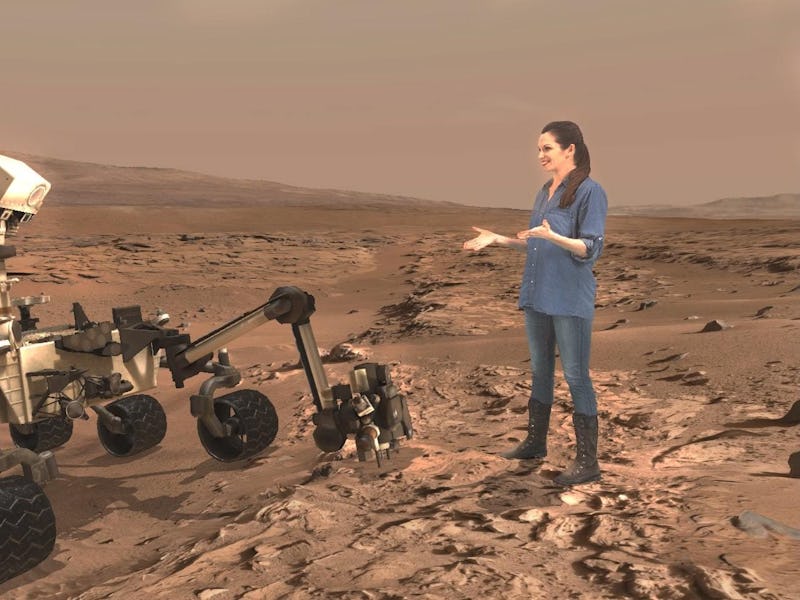I (Virtually) Walked on Mars, and It Was Awesome

Thanks to a partnership between NASA’s Jet Propulsion Laboratory (JPL) and Microsoft, I was able to roam around on the red planet, with Buzz Aldrin as my holographic guide. And it was awesome.
In September, Kennedy Space Center Visitor Complex unveiled a new augmented reality exhibit, called Destination: Mars, and I’d been wanting to try it.
The promotional material looked incredible, but I’ll admit, I was skeptical going in and really had no clue what to expect. Virtual reality headsets give me headaches, but HoloLens assures users that its augmented reality device — meaning a mix of holographic images and the real-world environment — won’t disrupt their vestibular system. They were right. The experience was nothing short of incredible.
The technology that powers Destination: Mars is the exact same technology used by NASA scientists to determine which targets the Curiosity rover will visit. Users don a HoloLens headset and are treated to actual images of Mars collected by the fleet of orbiters and rovers currently occupying the red planet.
This is the entrance to Mars.
Like all the hot spots here on Earth, if you want to visit Mars, you will need a reservation and a ticket. Once I had my ticket in hand, I checked in at my designated time and a crew member was on hand to measure my eyes, more specifically my interpupillary distance — aka the distance between the center of my pupils. This measurement is essential to assuring users have the best experience possible.
For the best viewing experience, the HoloLens is custom fitted to your eyes.
The experience takes about 30 minutes to complete, and two groups of up to 8 people each get to explore the red planet at one time.
Like any good space explorer does, we had to first watch an instructional video on how to wear the HoloLens before embarking on our journey. Once our devices were properly fitted and calibrated, we headed to Mars.
Sorry Willy Wonka, but Martian tickets are better than golden tickets.
After seeing our first glimpses of stars and nebulae in augmented reality splendor, holographic Buzz Aldrin appeared to guide us to Mars. Our journey started at Gale Crater where we saw Mars in all its glory. We visited three different sites on the red planet, looking at interesting geological features and walking all over the Martian surface before meeting up with the 7-foot-tall Curiosity rover and Erisa Hines, one of its drivers at JPL.
Curiosity showed off her snazzy laser — which she is now able to fire at will — by zapping some nearby rocks.
I was surprised by how closely the images resembled the ones we’re used to seeing on NASA’s websites. The 3D views really provided a sense of scale as to how massive certain features are on the red planet and illustrated how similar Mars is to Earth.
Buzz shows us our future on Mars.
After we said goodbye to Curiosity, Buzz gave us a glimpse into our future, as he showed us a Mars settlement with people and robots living on the red planet.
“One day, we’ll look at the sun as it sets on this new horizon and marvel how far we’ve come,” he says.
Unfortunately, we can only visit Mars virtually for now, but we can all experience the red planet together, right now, through the Curiosity’s eyes. If you want to check out Mars for yourself, you better hurry, as the exhibit unfortunately closes on January 1, 2017.